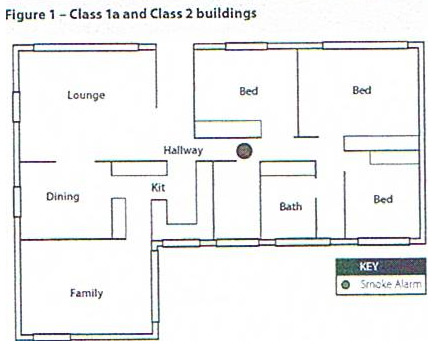NEW SMOKE ALARM REGULATIONS
It will be law for all residential properties to have mains powered smoke alarms installed from 1 October 2009. In dwellings where the construction of the building does not permit a space to conceal the wiring or where no mains power is available, smoke alarms with a 10 year battery life are permitted.
Under Building Regulations Amendment 2009 an electrical contractor must install mains powered smoke alarms before a property is sold or a new rental lease agreement has been signed.
Rental properties have until 1 October 2011 to comply with the new regulations.
IF YOU ARE SELLING
If you are selling a house built before 1997 you must install mains powered smoke alarms before settlement from 1 October 2009 when new laws come into effect.
If this does not occur your Local Government can inspect the property and issue a rectification notice, infringement notice or prosecute for any breaches with a fine up to $5000.
WHICH SMOKE ALARM IS BEST?
A mains powered photo electric smoke alarm is best with a fixed rechargeable battery that does not need to be changed for the life of the smoke alarm.
This type of alarm can detect smoke faster and more types of smoke compared to older models. This means you will be alerted to a fire earlier giving you more time to escape
All smoke alarms should be installed by a licensed electrical contractor in compliance with Australian Standard 3786 and must be changed every 10 years. The Building Codes of Australia outlines where smoke alarms should be installed.
IF YOU ARE BUYING
If you are buying a home built before 1997 make sure it has mains powered smoke alarms installed before you buy it. It will same you money and protect the lives of you and your family.
The responsibility for having smoke alarms fitted to the property rests with the seller. The seller should be aware of this new requirement, however check they are installed or you could have to pay yourself if they are not installed before settlement.
Have a licensed electrical contractor check that the alarms are within the 10 year service life.
Class 1a buildings, (house, duplex, villa or town house)
Class 1b buildings (flat or apartment)
Smoke alarms must be installed in a Class 1a building on or near the ceiling in –
- any storey containing bedrooms –
- between each part of the dwelling containing bedrooms and the remainder of the dwelling; and
- where bedrooms are served by a hallway, in that hall way, and
- any other storey not containing bedrooms.

Class 1b buildings
In Class 1b buildings, smoke alarms must be installed on or near the ceiling –
- in every bedroom; and
- in every corridor or hallway associated with a bedroom, or if there is no corridor or hallway, in an area between the bedrooms and the remainder of the building.
- On each other storey
(source: Building Code of Australia, 2008 Volume 2)

WHERE THERE’S SMOKE, THERE COULD BE FIRE!
Fires can start quickly and without warning. A working smoke alarm can provide valuable minutes in identifying a fire, giving you more time to escape safely. FESA recommends a smoke alarm is also installed in each bedroom.
Smoke alarms are very sensitive and may detect smoke and moisture created by common household activities, such as burning toast or steam from a bathroom.
Smoke alarms should not be located near:
- Cooking appliances
- Heathers or fireplaces
- Doorways to bathrooms, laundries or other humid areas
- Heating and cooling duct outlets
- Ceiling fans, doors and windows (excessive air movement may prevent smoke from reaching the smoke alarm)
- Fluorescent light fittings (to avoid the effect of electrical ‘noise’ or ‘flicker’) or doorways and windows where barbeques and incinerators are located.
The above information if sourced from FESA fact sheets, if you would like more information contact Riverside Settlements or www.fesa.wa.gov.au

